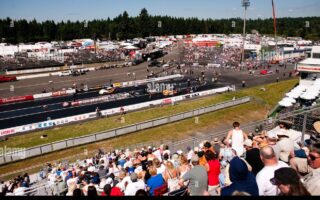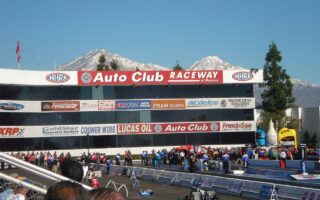Welcome to the pulse of speed, precision, and adrenaline—the F1 raceway. More than just a track, it’s a dynamic theater where cutting-edge technology meets the art of racing. Here, the roar of engines harmonizes with the cheers of fans, creating an atmosphere charged with excitement and anticipation. Each curve and straightaway tells a story of strategy, skill, and the relentless pursuit of triumph. As we delve into the intricacies of F1 raceways, we explore not only the engineering marvels that define these circuits but also the vibrant culture surrounding one of the most exhilarating sports in the world. Join us as we take a lap around the thrilling tapestry of F1 racing, where every second counts and every race is a testament to human ingenuity and determination.
Table of Contents
- Exploring the Anatomy of a Formula 1 Raceway
- Safety Innovations in Track Design and Engineering
- The Impact of Weather on Race Day Performance
- Maximizing Fan Engagement at F1 Events
- Q&A
- In Conclusion
Exploring the Anatomy of a Formula 1 Raceway
Understanding the intricate layout of a Formula 1 raceway is key to appreciating the sport’s adrenaline-fueled atmosphere. Every racetrack is a unique blend of engineering and artistry—a canvas where speed meets strategy. The circuits vary in design, characterized by sweeping curves, sharp turns, and elevation changes, all of which play a crucial role in the race dynamics. For drivers, mastering the nuances of each corner can mean the difference between victory and defeat. Some notable elements include:
- Curves: The turns, each with its own degree of difficulty and speed limits.
- Elevation Changes: Hills and dips that challenge a driver’s control and timing.
- Run-off Areas: Safety measures allowing drivers to recover from mistakes.
- Pit Lanes: Areas for refueling and tire changes, essential for race strategy.
At the heart of a raceway lies the start/finish line, the symbol of competitive spirit. This segment marks the culmination of speed and skill—an area where drivers’ precision is on full display. Behind the scenes, a wealth of technology supports the circuit, from sophisticated timing systems to advanced telemetry equipment, ensuring every second counts. To illustrate the remarkable variation among circuits, consider the following comparison of two iconic tracks:
| Track | Length (km) | Turns | Notable Features |
|---|---|---|---|
| Monaco | 3.337 | 19 | Street circuit, elevation changes |
| Silverstone | 5.891 | 18 | Fast straights, high-speed corners |
Safety Innovations in Track Design and Engineering
In the relentless pursuit of speed, safety innovations have become a cornerstone in the design and engineering of modern racetracks. Cutting-edge materials and innovative shaping of track surfaces enhance both performance and safety, ensuring that drivers can push their limits without the underlying fear of catastrophic accidents. Notable advancements include:
- Safer Barriers: High-energy absorbing barriers are strategically placed to mitigate the impact of collisions, significantly reducing injury risks.
- Crown Design: Optimizing the crown of the track enhances drainage, ensuring better grip and reducing aquaplaning conditions during wet races.
- Run-off Areas: Wider and more forgiving run-off zones provide drivers with an escape route, minimizing potential crashes and allowing quicker recovery.
Furthermore, the incorporation of innovative technologies such as virtual reality and simulation software has revolutionized track planning and testing. Engineers can now visualize potential risks and refine designs before construction begins. Data-driven decision-making processes are employed to assess:
| Innovation | Benefit |
|---|---|
| Smart Track Surfaces | Adaptive grip levels tailored to weather conditions |
| Real-time Monitoring Systems | Immediate data on track integrity and safety |
| Enhanced Lighting | Improved visibility during night races for safety |
The Impact of Weather on Race Day Performance
The atmospheric conditions on race day can dramatically influence both the performance of the vehicles and the strategies employed by the teams. Factors such as temperature, humidity, and wind speed not only affect tire grip and engine efficiency but can also lead to dramatic shifts in race outcomes. For instance, higher temperatures might cause tires to degrade faster, leading to more pit stops, while cooler temperatures can enhance grip but may require teams to adjust their setup to ensure optimal performance. Additionally, fluctuating humidity levels can impact the car’s aerodynamic performance, making tire selection and weather forecasting crucial components of race strategy.
Moreover, unexpected weather changes, such as the sudden onset of rain, can turn a carefully planned race into a chaotic challenge. Teams must quickly adapt their strategies and consider the impact of wet surfaces on traction. The unpredictability of weather patterns means that pit stops may need to be timed with precision to avoid losing vital positions. This variability keeps teams on their toes and amplifies the excitement of race day. The following table illustrates how certain weather conditions can affect key performance indicators during a race:
| Weather Condition | Impact on Performance | Tire Strategy |
|---|---|---|
| Sunny | Optimal grip, lower tire degradation | Medium to Hard tires |
| Rain | Reduced grip, increased risk of aquaplaning | Wet tires |
| Windy | Aerodynamic instability, difficulty handling | Standard tires with aerodynamic adjustments |
| Cold | Less tire warmth, increased braking distances | Soft tires with heat blankets |
Maximizing Fan Engagement at F1 Events
To create an unforgettable experience for fans at F1 events, it is essential to implement innovative strategies that foster interaction and excitement. Interactive zones can be established throughout the raceway, allowing fans to immerse themselves in the F1 atmosphere. Consider these elements:
- Virtual Reality Experiences: Let fans step into the driver’s seat with cutting-edge VR simulations.
- Meet-and-Greets: Organize sessions where fans can meet their favorite drivers and team members.
- Live Entertainment: Engage fans with live music, performances, and DJ sets during downtime.
Furthermore, leveraging technology can significantly enhance fan engagement. Social media challenges and live polling during races can keep fans connected and involved. Implementing a Fan Loyalty Program offers exclusive rewards, such as:
| Reward Type | Details |
|---|---|
| Exclusive Merchandise | Limited edition hats, shirts, and memorabilia. |
| VIP Access | Special entry to paddocks and driver zones. |
| Discount Offers | Reduced prices on tickets and merchandise for loyal fans. |
Q&A
Q&A: Exploring the Thrills of F1 Raceway
Q: What exactly is an F1 Raceway?
A: An F1 Raceway, or Formula 1 raceway, is a circuit specifically designed for high-speed automobile racing under the regulations of the Fédération Internationale de l’Automobile (FIA). These tracks boast a blend of long straightaways, challenging turns, and elevation changes that test both driver skill and vehicle performance.
Q: How does an F1 Raceway differ from other types of racing circuits?
A: While many racing circuits exist, F1 Raceways stand out due to their intricate design, which often includes advanced safety features, a mix of both fast and technical sections, and facilities that accommodate thousands of fans. Unlike oval tracks found in NASCAR, F1 circuits typically have a more complex layout with varying turns that require strategic driving and technical vehicle setups.
Q: What are some iconic F1 Raceways renowned for their challenges?
A: Several circuits are well-known among drivers and fans alike, including the Monaco Grand Prix circuit, famous for its tight corners and lack of overtaking opportunities, and Spa-Francorchamps in Belgium, renowned for its elevation changes and the thrilling Eau Rouge corner. Each track has its own unique characteristics, making every race a distinct challenge.
Q: What role does technology play in F1 Racing on these circuits?
A: Technology is integral to F1, influencing everything from car design to race strategy. Teams employ sophisticated data analytics and telemetry to enhance performance, while advancements in aerodynamics, hybrid engines, and tire technologies present both opportunities and challenges on the raceway. The precision of technology aids teams in making rapid decisions during the race, which often determines the outcome.
Q: How do F1 Raceways accommodate fans during race events?
A: F1 Raceways are designed with the fan experience in mind, offering grandstands with optimal views, hospitality suites, and interactive zones. Spectators can find amenities like merchandise shops, food stalls, and entertainment, creating an engaging atmosphere throughout race weekend. Many circuits also incorporate big screens to ensure fans don’t miss any action, even from the farthest bleachers.
Q: What are some environmental considerations for F1 Raceways?
A: As global awareness of environmental issues increases, F1 is striving to become more sustainable. Many raceways are implementing eco-friendly practices such as waste reduction, renewable energy sources, and carbon offset initiatives. The push for hybrid and fully electric racing means that circuits are also adapting to accommodate the evolving technology of race cars.
Q: Can anyone attend an F1 race?
A: Yes, F1 races are open to anyone who purchases a ticket, which can be done well in advance of the race weekend. The experience appeals to motorsport enthusiasts and casual fans alike, drawing audiences from around the world who come to witness the excitement and drama of Formula 1 racing live.
Q: What is the future of F1 Raceways?
A: The future of F1 Raceways is poised to evolve with changing technologies, fan expectations, and sustainability concerns. As the sport continues to innovate, we can expect new circuits to emerge and existing ones to update their features. The blend of tradition and modernity promises that F1 racing will remain thrilling for generations to come.
In Conclusion
As the checkered flag waves and the engines quiet, the allure of the F1 raceway lingers long after the last car leaves the track. This dynamic arena, where speed meets strategy, is more than just a stretch of asphalt; it is a stage for the relentless pursuit of excellence. Each lap tells a story of precision and passion, and each race fuels the dreams of those who dare to chase greatness. Whether you’re a die-hard fan or a curious newcomer, the F1 raceway beckons with its promise of thrilling competition and unyielding spirit. As we look ahead to the next event, the excitement remains palpable—the tire tracks may fade, but the memories and adrenaline will endure, waiting to be rekindled on the next lap around the sun. Until then, let’s savor the anticipation, for in the world of Formula 1, the race is never truly over.



